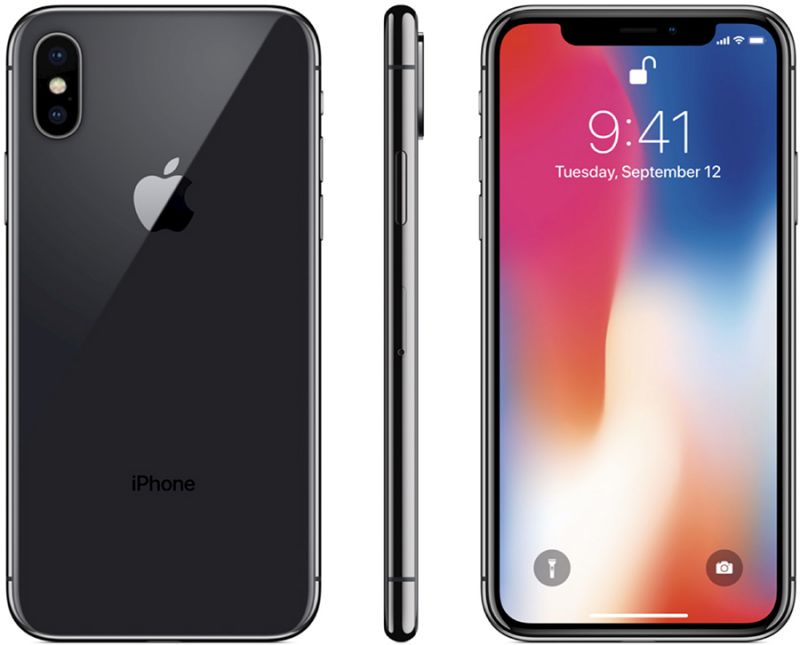iPhone X Review Gorgeous, pricey, and worth it
 If you have any interest in Apple’s (AAPL) hotly anticipated, $1,000, 10th-anniversary iPhone X (pronounced “ten”), then there are four dates to keep in mind:
If you have any interest in Apple’s (AAPL) hotly anticipated, $1,000, 10th-anniversary iPhone X (pronounced “ten”), then there are four dates to keep in mind:
September 12, 2017, when Apple first unveiled it to the public.
Tuesday, October 31, when most of the professional reviews appear.
November 3, when the phone is supposed to be available to buy.
The day when you can actually get one. These phones are difficult to manufacture and massively back-ordered, so if you order now, you might get one before the end of the year.
The price, the delays, and the popularity all tell you one thing, loud and clear: There’s an unbelievable amount of advanced technology in this thing.
The iPhone X is gorgeous, powerful, and expensive.
More
The Headline: Big Screen, Small Body
Everybody talks about the iPhone X price ($1,000 for 64 gigs of storage, $1,150 for 256 gigs). Or they talk about its face-recognition feature. But the best thing about the iPhone X is its size.
It’s a standard-size phone, only a hair bigger than an iPhone 7 or 8, and therefore easy to wrap your fingers around without growing extra knuckles. Yet the X has the screen size of the iPhone Plus models! By lopping off all the blank margins that usually surround an iPhone’s screen, Apple has found a much sweeter spot on the screen/body tradeoff spectrum. It’s all screen, making it look a lot like recent Samsung smartphones.
The iPhone X has about the same screen size as an iPhone Plus—in the body about the same size as a standard iPhone.
More
And what a screen it is. It’s Apple’s first OLED screen, meaning it’s got much darker darks and brighter brights than what’s come before—a million-to-one contrast ratio, Apple says. Unfortunately, there’s no way to see it except in person, because whatever screen you’re now reading on can’t display the X’s stunning range of color. But you see it right away, and it’s glorious to look at, no matter what app you’re running.
The phone is also very fast. Apple says that its processor is “the most powerful and smartest chip ever in a smartphone,” and that it has “four efficiency cores”—clearly, that’s better than three efficiency cores, right?
In practice, all of this means that opening apps, saving files, and playing games are faster and smoother than on, for example, the iPhone 7 or 6. (The iPhone 8 and iPhone X use the same processor.)
Yet somehow, Apple maintains that the iPhone X gets two hours more life per battery charge than the iPhone 7 and 8. Bizarrely, Apple gave most reviewers only 24 hours with the iPhone X before posting their reviews (not a week or two, as in the past 10 years), so nobody can really say what battery life is like in real-world scenarios. I’ll update this review once I’ve had a chance to live with it.
Facial Recognition
OK, so Apple made this phone all screen. In that case, where’s the Home button?
It’s gone. On the iPhone X, there is no Home button.
Wait, what? Every smartphone has a Home button!
On the iPhone, we use it to open the Home screen, trigger Siri, switch apps, pay with Apple Pay, take screenshots, turn on the screen magnifier, force quit an app, force-restart the whole phone when it gets locked up, and so on. Without a Home button, what happens to all of that?
You have to re-learn new techniques, which will take you a couple of days. Apple has come up with replacement gestures for all of them.
To return to the Home screen, you swipe up from the bottom of the screen. This can be a tiny swipe, even a quarter of an inch upward; it quickly becomes quick and instinctive. (Until, that is, you try to do it on someone’s iPad or older iPhone and feel like an idiot.)